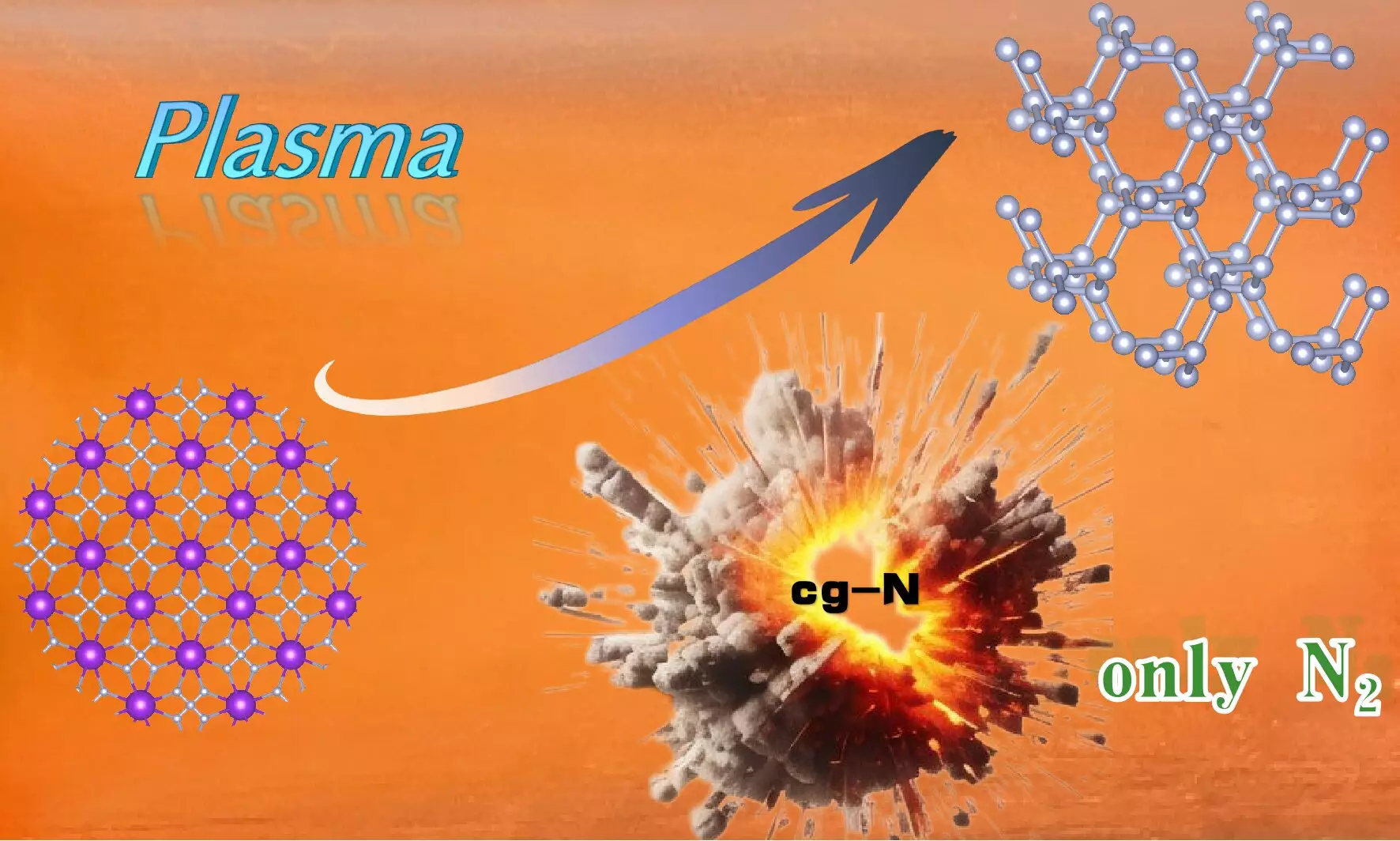In a significant advancement in materials science, researchers from the Hefei Institutes of Physical Science, under the guidance of Prof. Wang Xianlong, have developed a process to synthesize cubic gauche nitrogen (cg-N) efficiently at atmospheric pressure. The promising nature of cg-N lies not only in its distinctive structural properties but also in its potential application as a high-energy-density material. Unlike traditional explosives, the thermal decomposition of this compound exclusively yields nitrogen gas, marking it as a safer alternative in energy applications.
The method employed in this research, known as plasma-enhanced chemical vapor deposition (PECVD), represents a modern approach for synthesizing complex materials. By treating potassium azide (KN3), which is relatively less toxic compared to conventional precursors, the research team avoided significant safety risks while maintaining efficiency. The decision to use KN3 benefited from its strong electron transfer capability, making it an ideal candidate for the formation of cg-N. This innovative technique not only highlights the utility of PECVD but also demonstrates an effective way to sidestep the restrictive characteristics often posed by carbon nanotubes in similar processes.
One of the notable challenges in synthesizing cg-N at atmospheric pressure was its inherent instability. Traditional notions of stability in high-energy materials often restrict operational conditions to elevated pressures. However, this research brought a fresh perspective, utilizing computational models to predict surface stability under varied pressures and temperatures. Remarkably, the findings indicated that cg-N could remain stable at elevated temperatures, provided certain conditions were met—such as saturating surface suspension bonds and facilitating charge transfer.
The thermal behavior of the synthesized cg-N was rigorously examined through thermogravimetric and differential scanning calorimetry (TG-DSC). Results revealed that this novel material could withstand thermal stress up to 760 K, beyond which significant decomposition occurs. This revelation not only underscores the robustness of cg-N as an energy-dense material but also sets a foundation for further exploration into its application in energetic systems.
The implications of this research extend far beyond the synthesis of cg-N. The successful creation of this material at atmospheric pressure opens new avenues in the field of high-energy-density compounds. The development of safer and more efficient synthesis techniques could revolutionize how materials are produced for both civilian and military applications. Moreover, this work prompts future investigations into the structural nuances of cg-N, potentially leading to additional innovations in material engineering.
The work led by Prof. Wang Xianlong exemplifies a transformative step in the synthesis of energetic materials. By leveraging modern techniques like PECVD and a focus on stability under atmospheric conditions, the research team has laid the groundwork for a new class of high-energy-density materials that are not only efficient but also significantly safer than their predecessors. As the field progresses, the findings from this study are poised to inspire new methodologies and applications in energy materials research.


Leave a Reply